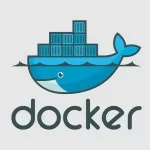Deploying to K8s cluster with Fn Function
An essential step of any CI/CD pipeline is deployment. If the pipeline operates with Docker containers and deploys to K8s clusters then the goal of the deployment step is to deploy a specific Docker image (stored on some container registry) to a specific K8s cluster. Let’s say there is a VM where this deployment step is being performed. There are a couple of things to be done with that VM before it can be used as a deploying-to-kuberenetes machine:
- install kubectl (K8s CLI)
- configure access to K8s clusters where we are going to deploy
Having the VM configured, the deployment step does the following:
01 02 03 04 05 06 07 08 09 10 11 | # kubeconfig file contains access configuration to all K8s clusters we need# each configuration is called "context"export KUBECONFIG=kubeconfig# switch to "google-cloud-k8s-dev" context (K8s cluster on Google Cloud for Dev)# so all subsequent kubectl commands are applied to that K8s clusterkubectl config use-context google-cloud-k8s-dev# actually deploy by applying k8s-deployment.yaml file# containing instructions on what image should be deployed and how kubectl apply -f k8s-deployment.yaml |
In this post I am going to show how we can create a preconfigured Docker container capable of deploying a Docker image to a K8s cluster. So, basically, it is going to work as a function with two parameters: docker image, K8s context. Therefore we are going to create a function in Fn Project basing on this “deployer” container and deploy to K8s just by invoking the function over http.
The deployer container is going to be built from a Dockerfile with the following content:
01 02 03 04 05 06 07 08 09 10 11 12 13 14 15 16 17 18 19 20 21 22 23 24 | FROM ubuntu# install kubectlADD https://storage.googleapis.com/kubernetes-release/release/v1.6.4/bin/linux/amd64/kubectl /usr/local/bin/kubectlENV HOME=/configRUN chmod +x /usr/local/bin/kubectlRUN export PATH=$PATH:/usr/local/bin# install rplRUN apt-get updateRUN apt-get install rpl -y# copy into container k8s configuration file with access to all K8s clustersCOPY kubeconfig kubeconfig# copy into container yaml file template with IMAGE_NAME placeholder# and an instruction on how to deploy the container to K8s clusterCOPY k8s-deployment.yaml k8s-deployment.yaml# copy into container a shell script performing the deploymentCOPY deploy.sh /usr/local/bin/deploy.shRUN chmod +x /usr/local/bin/deploy.shENTRYPOINT ["xargs","/usr/local/bin/deploy.sh"] |
It is worth looking at the k8s-deployment.yaml file. It contains IMAGE_NAME placeholder which is going to be replaced with the exact Docker image name while deployment:
01 02 03 04 05 06 07 08 09 10 | apiVersion: extensions/v1beta1kind: Deployment... spec: containers: - image: IMAGE_NAME imagePullPolicy: Always... |
The deploy.sh script which is being invoked once the container is started has the following content:
1 2 3 | #!/bin/bash# replace IMAGE_NAME placeholder in yaml file with the first shell parameter |
1 2 3 4 5 6 7 8 9 | rpl IMAGE_NAME $1 k8s-deployment.yamlexport KUBECONFIG=kubeconfig# switch to K8s context specified in the second shell parameterkubectl config use-context $2# deploy to K8s clusterkubectl apply -f k8s-deployment.yaml |
So, we are going to build a docker image from the Dockerfile by invoking this docker command:
1 | docker build -t efedorenko/k8sdeployer:1.0 . |
Assuming there is Fn Project up and running somewhere (e.g. on K8s cluster as it is described in this post) we can create an Fn application:
1 | fn apps create k8sdeployerapp |
Then create a route to the k8sdeployer container:
1 | fn routes create k8sdeployerapp /deploy efedorenko/k8sdeployer:1.0 |
We have created a function deploying a Docker image to a K8s cluster. This function can be invoked over http like this:
1 | curl http://35.225.120.28:80/r/k8sdeployer -d "google-cloud-k8s-dev efedorenko/happyeaster:latest" |
This call will deploy efedorenko/happyeaster:latest Docker image to a K8s cluster on Google Cloud Platform.
That’s it!
| Published on Java Code Geeks with permission by Eugene Fedorenko , partner at our JCG program. See the original article here: Deploying to K8s cluster with Fn Function Opinions expressed by Java Code Geeks contributors are their own. |








